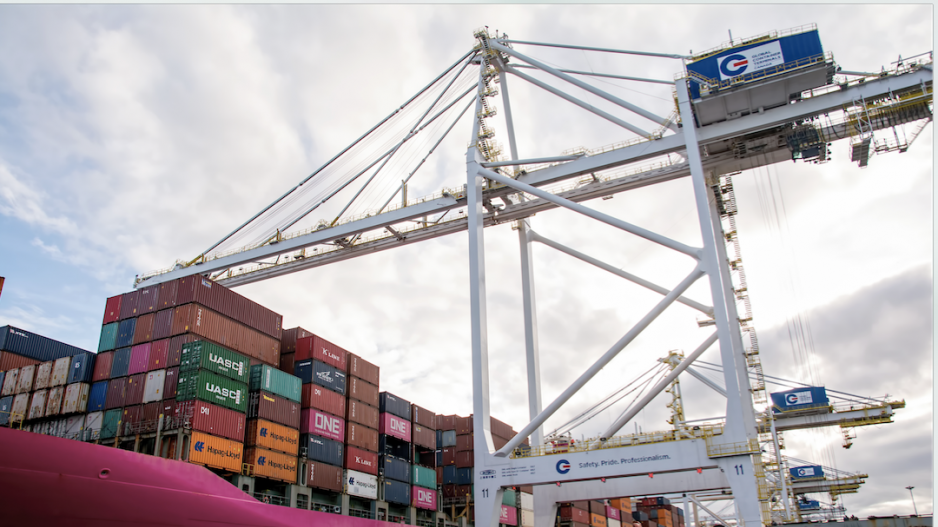In November, growth in B.C.’s merchandise exports returned to positive territory, achieving a year-over-year gain of 2.5 per cent – the first increase since January 2023.
Total exports – which have been sluggish since their peak in mid-2022 — reached $4.6 billion. Despite steadiness in recent months, export sales are still down about 20 per cent from peak.
Imports have also declined but have held up better, even with an 11-per-cent year-over-year drop. Year-to-date, trade volume fell, with imports down 3.9 per cent and exports down 13.6 per cent.
Within exports, key themes persisted. The drag on 12-month exports was primarily driven by forestry products, experiencing a 15.5-per-cent decrease, which reflects challenging market conditions for U.S. housing starts and still-modest prices. Subsequently, there was a decline in consumer goods (down 7.3 per cent), and in farm, fishing and intermediate food products (down 9.2 per cent). This was counterbalanced by a significant increase in metal ores and non-metallic minerals (up 262 per cent) and metal and non-metallic mineral products (up 24.6 per cent). Year-to-date, the decline in exports was led by a 28.2-per-cent decline in forestry products and an 18.9-per-cent decline in energy products.
On the imports side, the decline was led by lower consumer goods (down 16.9 per cent), and industrial machinery, equipment and parts (down 26.5 per cent). Only three categories saw a year-over-year monthly increase in imports, led by motor vehicle and parts (up 76.7 per cent). Year-to-date, lower imports were largely driven by fewer consumer goods (down 11.8 per cent), metal and non-metallic mineral products (down 23.9 per cent), and forestry products (down 16 per cent). These were offset by motor vehicle and parts (up 36.3 per cent) and energy products (up 47.1 per cent).
B.C. building permits declined further in November following an October drop. Total volume of permits decreased by 3.7 per cent to $1.6 billion. Although monthly data can be erratic, November’s number was the lowest figure since February 2023. The overall trend shows slowing construction intentions given unfavourable borrowing conditions, fewer pre-sales and a stale economic environment. The month’s reduction was driven by a strong dip in residential unit construction, which retrenched by 19.4 per cent – a decline equal in magnitude to the drop recorded in the prior month. On the other hand, non-residential permits saw a boost, up 48.5 per cent during the month. Year-to-date, total dollar permit volumes have receded 11.1 per cent, with residential permit volumes down 15.8 per cent while non-residential permit volumes declined 0.4 per cent.
Total residential permit values fell in November to $1.04 billion, with multi-family dwelling permits leading the monthly decline with a decrease of 27.6 per cent. Single-family dwelling permit values increased 14.7 per cent during the month to almost counter the 16.7-per-cent decline in the previous month. Year-to-date, single-family permits have decreased 18.8 per cent while multi-family permits have fallen 14.9 per cent. Non-residential permit volumes increased in November, rising to $574.3 million following two consecutive month-over-month declines.
Vancouver recorded a 11.3-per-cent contraction in monthly permits, following a reduction of 16.9 per cent in October.
Bryan Yu is chief economist at Central 1.






